6. The Human Condition (1959-1961) – Masaki Kobayashi
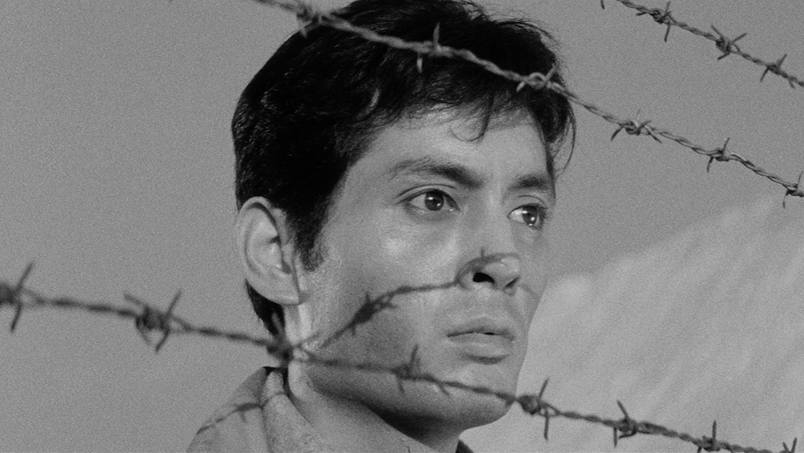
Masaki Kobayashi’s 9 ½ epic film trilogy is a monumental achievement of both filmmaking and philosophical inquiry. The Human Condition follows a young Japanese pacifist named Kaji as he struggles to navigate his way through World War II while maintaining his ideals of nonviolence and equality.
Our peaceful protagonist’s plight is a classic cinematic example of an individual’s struggle against a societal machine, and Kaji embodies the challenge of maintaining personal beliefs which are at odds with those of a government.
Throughout the film’s three parts (No Greater Love, Road to Eternity, and A Soldier’s Prayer), Kaji faces ethical conflicts and harsh punishments due to his beliefs. His struggle to reconcile his philosophical ideals with his honor and duty as a soldier echoes the universal paradox faced by all who aspire to live authentically and consistently.
When Tolstoy advocated for a Christian social structure which included a steadfast refusal to participate in war, he had no illusions about the potential consequences for the conscientious objector. He himself was excommunicated from the Russian Orthodox Church for his teachings (a fact which he lost little sleep mourning over).
While encouraging obedience to secular authorities whenever possible, The Kingdom of God is Within You favorably cited many examples of people being imprisoned or ostracized for their practice of complete nonviolence.
Tolstoy firmly believed that enduring outward hardships in order to maintain one’s ethical integrity might be a necessary cost of keeping complete freedom of conscience. He summed up the ultimate aim of such civil disobedience: “As soon as men live entirely in accord with [the love] natural to their hearts…and therefore hold aloof from all participation in violence …not only will hundreds be unable to enslave millions, but not even millions will be able to enslave a single individual.”
7. Andrei Rublev (1969) – Andrei Tarkovsky
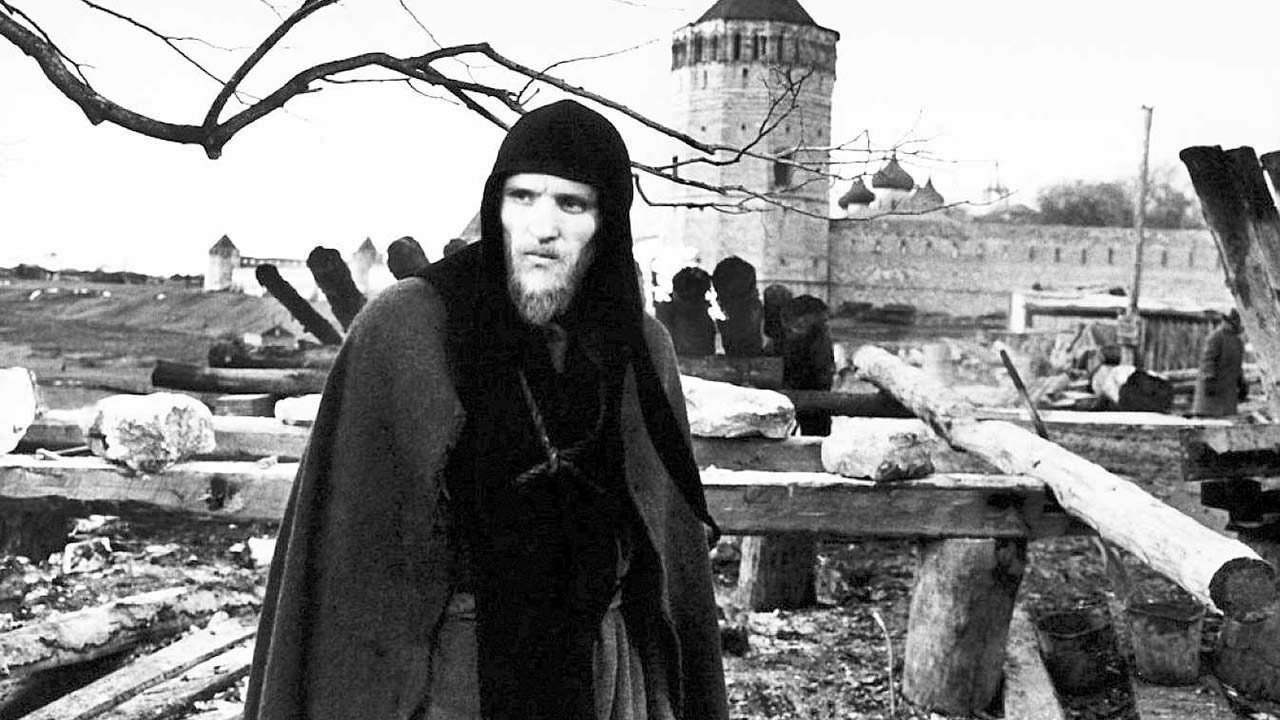
Andrei Tarkovsky’s epic masterpiece chronicles the life and times of the famous 15th-century Russian icon painter Andrei Rublev. Divided into eight episodes, this film shares some of the facts we know about the artist’s life while vividly portraying Russian life during his era.
Andrei Rublev’s quest for an authentic spirituality which would produce a higher art is complex, winding, and better viewed than described. But his search leads him through a season of life during which he gives up painting and takes a vow of silence. Rublev only breaks this vow and takes up painting again when he believes he can do it honestly and with his entire being.
This decision makes up one of the final scenes of a truly unique film, which concludes with a sublime and moving display of Rublev’s works of art. Andrei Rublev is itself a work of art which does not yield its treasures easily, but which rewards the thoughtful and patient viewer.
In 1897, Leo Tolstoy trained the penetrating gaze of his radical Christian worldview on the realm of art with his titled What Is Art? In this authoritative critique, Tolstoy is savagely iconoclastic in a way that only a true icon of art could presume to be. Unafraid to overthrow the worth of such luminaries as Dante and Shakespeare, Tolstoy was no less merciful to himself when it came to his past works of fiction.
Thrashing his own celebrated novels War and Peace and Anna Karenina as inauthentic, he advocated for a simple and accessible style of art which directly conveys a feeling which the artist has experienced. Believing that art could and should be a hugely influential force for good, he, like Andrei Rublev, was determined to produce only the most authentic, useful art possible.
8. The Last Temptation of Christ (1988) – Martin Scorsese
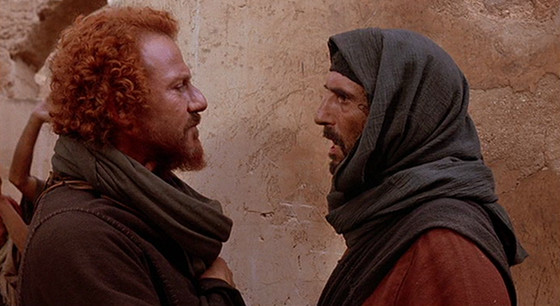
Martin Scorsese’s The Last Temptation of Christ is a complicated film to analyze, partly because its reputation is so vastly different than its actual substance. Beneath the superficial controversies of the story that “felt” blasphemous to so many people of faith is a truly reverential view of its subject. But the story’s unorthodox path along the razor’s edge of a paradox and toward that place of devotion proved to be a treacherous one.
Both the film and its source novel make clear that elements of the story are fictional, and both focus on the humanity of Jesus – not in an effort to disprove his deity but in order to make his sacrificial choice more immediate, personal, and profound. Though the film has had a rocky relationship with mainstream Christianity, outsiders to the faith might find a protagonist to whom they can more easily relate as a human.
The central inspiration for Tolstoy’s entire philosophical worldview came from his interpretation of the teachings of Jesus as found in the four Gospels of the New Testament. In his 1902 book The Gospel in Brief, Tolstoy formed a synthesis of all four Gospels which told an unconventional account of the life of Jesus.
Most controversially, Tolstoy removed references to the miracles of Jesus, and avoided almost all mention of his divine nature; however, these omissions were not intended to be heretical, but rather to provide a fresh perspective. By focusing on only the words which are recorded as having been spoken by Jesus, Tolstoy sought to bring the focus of Christianity back to its ethical groundings.
His idea was to show that Christianity offered the highest ideal for what a moral life could be – even without the miraculous proofs which are often relied on to win converts. As with The Last Temptation of Christ, this effort to reaffirm the teachings of Jesus by temporarily highlighting one half of a paradox turned out to be controversial but influential.
9. Gandhi (1982) – Richard Attenborough
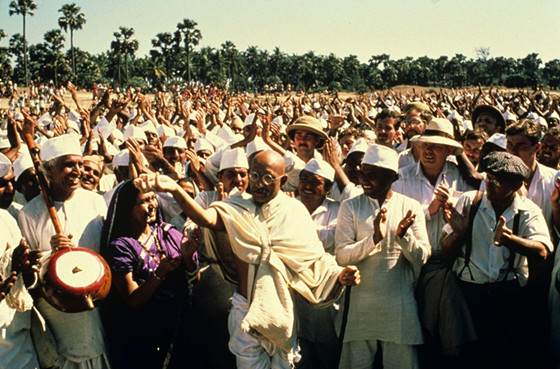
The name of Gandhi is universally recognized in a way that few other names are. Richard Attenborough’s epic biopic chronicles the best known parts of Gandhi’s life in grand fashion. Played brilliantly by Ben Kingsley, Gandhi was the leader of India’s 20th century independence movement against the United Kingdom.
Armed with only the weapons of nonviolence and non-cooperation, he became both a directly influential leader and a modern representative for the principles of peace and nonviolence. Gandhi took his own experience of discrimination as a young man and turned it into a powerful force for good in the world.
From his political activism to his hunger strikes against sectarian fighting, Gandhi’s life remains celebrated, and his name is a kind of byword for all that is peaceful and just. Attenborough’s film is a worthy account of the Mahatma’s story.
When an individual shakes the world in some way, it’s worthwhile to discover the influences which shaped it, and Gandhi’s connection to Tolstoy runs deep. In 1908, Tolstoy wrote the influential “A Letter to a Hindu,” which soon found its way into the hands of a young Gandhi.
In the letter, Tolstoy responded to a request for advice regarding India’s independence movement, and the Russian argued that only through nonviolence and the principle of love could India’s freedom be rightfully obtained. When Gandhi read the published letter, he wrote to Tolstoy and the two began a correspondence.
Stating that Tolstoy’s book The Kingdom of God is Within You had “overwhelmed” him, Gandhi called Tolstoy “the greatest apostle of non-violence that the present age has produced.”
In 1910, Gandhi established the “Tolstoy Farm” in South Africa, which became for a time the headquarters of his nonviolence campaign. Though it’s impossible to know exactly the extent to which one life shapes another, the relationship between these two is a fascinating topic to explore.
10. The Last Station (2009) – Michael Hoffman
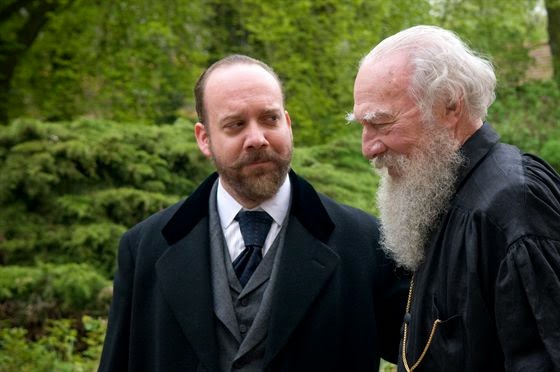
The Last Station is the most biographical of these films relating to Tolstoy’s philosophy, and it’s an important one for the way that it portrays the beliefs that defined his final days. In 1910, the final year of Tolstoy’s life, things were not peaceful in the home of the champion of nonviolence.
By this time Tolstoy had adopted a strict ascetic lifestyle, and his teachings had attracted a number of followers who hung on his every word. He was now opposed to the ownership of private property, and was drafting a will which would have placed the copyrights of all his written works in the public domain. All of these factors were placing a tremendous strain on Tolstoy’s marriage, and he left home in the dead of night to seek more peaceful pastures.
Unfortunately, Tolstoy was almost immediately stricken with pneumonia, and died soon thereafter. The Last Station captures both the tender humanity of the Tolstoy marriage and the reality of the tension which separated them at the end. Christopher Plummer and Helen Mirren are brilliant in their roles, and this film is an honest look at the complicated final days of a complex man.
Leo Tolstoy’s story is so full that it seems almost too much for one life. Even the study of his philosophy, which developed mainly in the second half of his life after he was already a world-renowned novelist, is a daunting task. But the authenticity with which he adopted the uncompromising convictions of his later life deserves our respect; he was unafraid to denounce even his own former beliefs, and he strove to apply what he saw as right to every possible aspect of his life.
In many ways, Tolstoy’s philosophy is an underappreciated and often unknown force which has helped shape some of the 20th century’s most important social reforms. Whether you prefer Tolstoy the Novelist or Tolstoy the Philosopher will be a matter of personal taste, but his life offers something of interest for everyone.